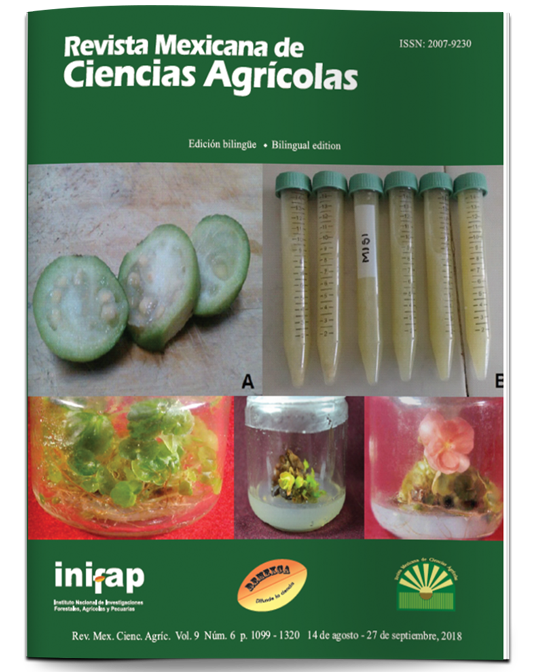Physicochemical properties of guayabilla (Psidium guineense), myrtle (Psidium sartorianum) and guava (Psidium guajava)
DOI:
https://doi.org/10.29312/remexca.v9i6.1576Keywords:
Psidium guajava, Psidium guineense, Psidium sartorianum, antioxidant capacity, total soluble solidsAbstract
In order to determine the possible use of guayabilla (Psidium guineense) and myrtle (P. sartorianum) in innovation for the generation of food products, the physicochemical properties of fruits of these species were compared with those of guava (Psidium guajava). For this, five wild fruit collection sites were selected in the municipality of Talpa, Jalisco. The hypothesis was that the levels of citric acid and ripening index could be higher in guayabilla and myrtle, while the sugar content could be higher in guava. The experimental design used was a completely randomized one with a number of fruits that varied depending on the trees of the species present in each site. The obtained means were compared by the Tukey test p= 0.05. The acidity observed in mature fruits of Psidium sartorianum and Psidium guineense ranged between pH 2.84 to 3.21, while in guava a pH of 4.13 (less acidic) was observed. The titratable acidity obtained was congruent with the pH, since at lower values of titratable acidity correspond the lower pH values. Despite the acidity of the fruits of Psidium sartorianum, one of the collection sites showed a total soluble solids index (7.4 °Brix) higher than that of guava (5.32 °Brix). The ripening index was higher for guava, in contrast to the low values found in Psidium guineense and Psidium sartorianum. Finally, Psidium guajava presented larger fruits than the two-wild species.
Downloads
Downloads
Published
How to Cite
Issue
Section
License
The authors who publish in Revista Mexicana de Ciencias Agrícolas accept the following conditions:
In accordance with copyright laws, Revista Mexicana de Ciencias Agrícolas recognizes and respects the authors’ moral right and ownership of property rights which will be transferred to the journal for dissemination in open access. Invariably, all the authors have to sign a letter of transfer of property rights and of originality of the article to Instituto Nacional de Investigaciones Forestales, Agrícolas y Pecuarias (INIFAP) [National Institute of Forestry, Agricultural and Livestock Research]. The author(s) must pay a fee for the reception of articles before proceeding to editorial review.
All the texts published by Revista Mexicana de Ciencias Agrícolas —with no exception— are distributed under a Creative Commons License Attribution-NonCommercial 4.0 International (CC BY-NC 4.0), which allows third parties to use the publication as long as the work’s authorship and its first publication in this journal are mentioned.
The author(s) can enter into independent and additional contractual agreements for the nonexclusive distribution of the version of the article published in Revista Mexicana de Ciencias Agrícolas (for example include it into an institutional repository or publish it in a book) as long as it is clearly and explicitly indicated that the work was published for the first time in Revista Mexicana de Ciencias Agrícolas.
For all the above, the authors shall send the Letter-transfer of Property Rights for the first publication duly filled in and signed by the author(s). This form must be sent as a PDF file to: revista_atm@yahoo.com.mx; cienciasagricola@inifap.gob.mx; remexca2017@gmail.
This work is licensed under a Creative Commons Attribution-Noncommercial 4.0 International license.



